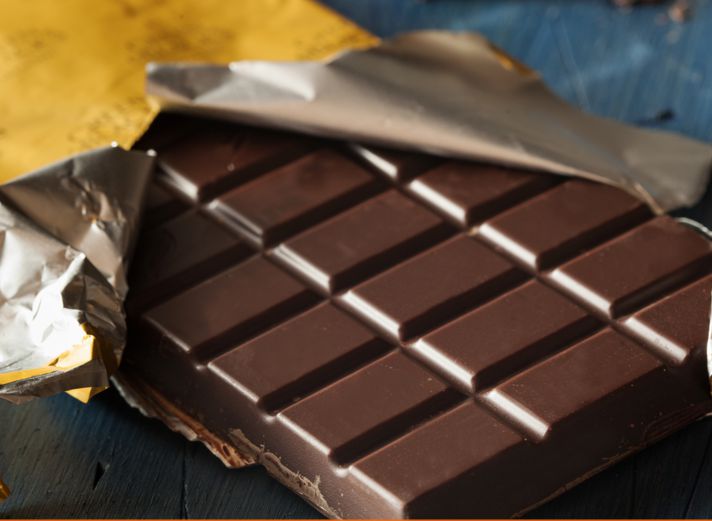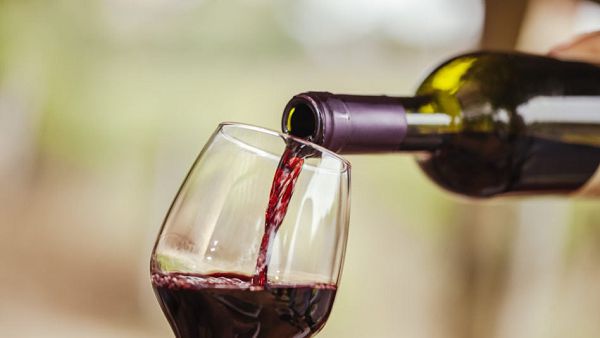
Science headlines, news values and ‘churnalism’
Do you ever wonder why scientists say wine is good for you and after you have given yourself ‘treats’ from tall wine glasses for years, they come back later to tell you it is bad for your health?
A recent study published in The Lancet concluded that there is no amount of alcohol consumption that is safe for overall health. That came as a surprise because for years, public health officials advocated that moderate drinking (defined as up to a drink per day for women and up to two per day for men) would not hurt anyone.
There have been a number of such ‘surprises’ and as Prof. Jenny Kitzinger, an academic, puts it, the general public is concerned about how scientific guidance for health does not stay the same: “One week the headlines say something is good for you, the next week it’s bad for you.”
Single studies and churnalism
One problem has been how journalists are not able to put individual studies into context. The recent UK House of Commons Science and Technology report in the House of Commons science and technology committee (Science Communication and Engagement Report 2016-17) revealed that the fact that a lot of journalists were not scientists or did not have any education in science made it difficult to grasp or make meaning of scientific information which often led to distortion of data. Political economists of the media have also argued that the growing commercialisation of news has led to a decline in editorial excellence and ethics.
Most media houses are not well resourced, which leaves journalists with less time for independent work, fact checking and researching stories leading to what journalist Nick Davies described as “churnalism”, a situation where reporters just cut and paste words from press releases rather than rewriting and sourcing them.
Moreover, news values direct the weight a media organisation places on a story and how it is regarded by its audience and media houses use the news values of unexpectedness, negativity, unusualness etc. inspired by press releases of scientific studies to produce “attractive” headlines to grab readers’ attention and for profit.
Writing on ‘Researching risk and the media,’ Prof. Kitzinger noted that unusual risks were more attractive than common risks; personal accounts from victims make a story newsworthy; story laden with controversy is attractive to news media and the ability to blame someone also gives story prominence.
Academics looking at the ‘medialisation of science’ also argue that in order for scientists to validate their work; be in good standing and obtain funds, scientists have more and more pushed towards communicating with the general public through reportage on their activities in the media. The main channel has been through the use of press releases and it is very possible that the details and quotes that appear in the statement will be added to the corresponding story.
This article will specifically look at some scientific studies on chocolate (chocolates have been linked to weight loss, good bones, low blood pressure, cancer, etc. The list is endless) and how they are selected, framed and constructed for public discourse.
The chocolate diet hoax
In 2015, one Dr John Bohannon and his collaborators hatched a plan to show how easy it was to turn ‘dubious’ science studies into big stories using a chocolate diet and the media fell for it without scrutiny.
The story was on the front page of Bild, a German daily newspaper and also found its way in more than 20 countries. For instance the Mail Online wrote: “Pass on the Easter egg! New study reveals that eating chocolate doesn’t affect your body mass index … and can even help you lose weight!” The Express headline was “Chocolate accelerates weight loss: Research claims it lowers cholesterol and aids sleep.” The Daily Star — “Has the world gone coco? Eating chocolate can help you lose weight.”
p-hacking?
Advertisement

Media houses use attractive headlines to grab readers’ attention
Scientists are under pressure to publish, especially with funding on the line. To get their studies published, journals need results that seem new and ‘astounding’.
There are ways scientists adjust their methodology to come up with impressive or big results. An example is ‘p-hacking’ where scientists gather a lot of variables, fiddle with the data until they get something that counts as statistically significant but probably meaningless.
However, writing on Statistical Errors in Nature, Regina Nuzzo argues that the P values which are seen as the benchmark for statistical validity are not as genuine as researchers believe it to be.
Dr Bohannon engaged in p-hacking for his fake research and as he noted in his “tell all” story (I Fooled Millions Into Thinking Chocolate Helps Weight Loss. Here's How) he concocted a press release spicing it up with a whole lot of attractive words.
“Rather than tricking journalists, the goal was to lure them with a completely typical press release about a research paper”, Bohannon said. Although Bohannon admits that reporters asked questions, they only scratched the surface and failed to see the pitfalls of the research. The UK’s Public Attitudes to Science (PAS) 2014 Main Report revealed that 28 per cent of the respondents said journalists sometimes do not examine the trustworthiness of scientific research results ahead of putting it in the public domain.
As the UK House of Lords Select Committee on Science and Technology 2000 report noted, in their effort to beat the competition, for science journalists, their basic role is to get stories into the paper because they are journalists first and not educators.
Most people love chocolate and there are others out there hoping to lose weight. Thus, most people can identify with this story and the fact that it is “unusual” for chocolate to help you lose weight, the news values of meaningfulness and unexpectedness was what reporters relied on to push Bohannon’s study (although fake) to the headlines.
Prof. Kitzinger argues that reporters will place emphasis on scientific studies that have favourable results of risk than those that give no proof of danger while Baroness Susan Greenfield, a British scientist, said the public was most often left “unduly panicked” and “insufficiently informed” because an attempt to put out a compelling story only results in “quirky” and “sensationalist” reports.
Science news and academic press releases

Is drinking wine better than going to the gym?
In 2016, at the Society for Maternal-Fetal Medicine’s annual meeting, a paper titled: “High-flavonol chocolate to improve placental function and to decrease the risk of preeclampsia: a double blind randomised clinical trial” published in the American Journal of Obstetrics and Gynaecology was presented.
The study looked at the effects of high and low flavonols chocolate during pregnancy — on “placenta function” and “risk of preeclampsia”. However, there were no control group of women who did not eat chocolate. The study found no difference in preeclampsia and high pressure between women who ate the two chocolates.
But the press release for the study had the very attractive headline — “The benefits of chocolate during pregnancy”. Researchers looking at the association between exaggeration in health related science news and academic press releases concluded that there was a strong connection between embellishments in news with embellishment in press releases. They maintain that in order to lessen the wrong impression or ideas of health-related news, there was the need to enhance the correctness of academic press releases.
Science news and corporate public relations
In her book Selling science – How the press cover science and technology, Dorothy Nelkin observed that companies or organisations utilised the reputation of science to further their own aim and objectives just as academic institutions promoted the significance of science to get positive reportage. However, she notes that companies themselves engage scientists in their public relations endeavours.
This is evidenced in this story: “Nestlé says it can slash sugar in chocolate without changing taste”. The story published in The Guardian only quotes Nestlé’s chief technology officer, Stefan Catsicas: “This truly ground-breaking research is inspired by nature and has the potential to reduce total sugar by up to 40 per cent in our confectionery.
A search on Nexis (a searchable database of news articles) revealed that the press release was almost what was reproduced in the story. A senior lecturer with Cardiff University, Dr Andy Williams, argues that there are many ways often clandestinely that firms employ to let other people (third parties or independent bodies) express the firm’s communications as if the message was coming from the third parties to make it more trustworthy and unbiased.
He explains that such third parties or seemingly independent bodies advance the cause of companies while portraying it to be in the public interest.
Who is to blame?
Andrew Gelman, writing in the New York Times, says: The big problem in science is not cheaters or opportunists, but sincere researchers who have unfortunately been trained to think that every statistically ‘significant’ result is notable.
A study looking at the association between exaggeration in health-related science news and academic press releases by Prof. Petroc Sumner and his colleagues said the blame must not be laid squarely at the door of journalists because for health and science news that are facilitated by press releases, the key place where both exaggerations and caveats originate seem to be the press statement itself.
In an interview, Dr Williams notes that there is a strong argument saying journalists should not really routinely report on the findings of individual studies and advised that it was incumbent on reporters no matter the pressure to abide by the guidelines for reporting science and health stories to gain public trust.
He said journalists were often not in a position to do a huge amount about the dangers presented by misleading scientific studies, or exaggerated science public relations.
Additionally, he observed that many journalists worked under difficult conditions, with very high workloads and limited time, but there were things which could be done to minimise these problems.
However, Dr Williams said the most important things journalists could do was to set aside time for checking for accuracy, interviewing a range of experts to ask for independent evaluation of claims made in press releases, being very clear about the scope, rigour, and stage of research, and putting individual studies into context for readers by explaining how the evidence they generate fits in with the rest of the existing knowledge in the field.
“All of these boil down to a call for journalists to slow down, do broader research and fact-checking, and not to take the claims made by scientists and others in press releases at face value,” he added.
